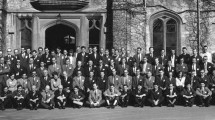Abstract
For aromatic organic radicals, pulsed electron-electron double resonance (PELDOR) experiments at high magnetic fields offer the possibility to achieve orientation-selective pumping and detection that could allow one not only to determine the distance between paramagnetic species but also their relative orientation with respect to the interconnecting dipolar axis. We present a PELDOR two-frequency setup that was introduced into our homebuilt 180 GHz pulsed electron paramagnetic resonance (EPR) spectrometer and we discuss its technical and experimental features. The capability of 180 GHz PELDOR has been tested using the three-pulse ELDOR sequence on the protein RNR-R2 (ribonucleotide reductase) fromEscherichia coli, which contains two tyrosyl radicals at a distance of 3.3 nm. At 180 GHz, orientation selectivity is observed and the modulation frequency was found in good agreement with theoretical predictions, which take into account the relative orientation of the radicals from X-ray data.
Similar content being viewed by others
References
Milov A.D., Ponomarev A.B., Tsvetkov Yu.D.: Chem. Phys. Lett.110, 67 (1984)
Jeschke G.: Macromol. Rapid Commun.23, 227–246 (2002)
Hara H., Kawamori A., Astashkin A.V., Ono T.: Biochim. Biophys. Acta1276, 140–146 (1996)
Elsässer C., Brecht M., Bittl R.: J. Am. Chem. Soc.124, 12606–12611 (2002)
Bennati M., Weber A., Antonic E., Perlstein D., Robblee J., Stubbe J.: J. Am. Chem. Soc.125, 14988–14989 (2003)
Schiemann O., Weber A., Edwards T.E., Prisner T.F., Sigurdsson S.T.: J. Am. Chem. Soc.125, 3434–3435 (2003)
Schiemann O., Piton N., Mu Y., Stock G., Engels J.W., Prisner T.F.: J. Am. Chem. Soc.126, 5722–5729 (2004)
Jeschke G., Wegener C., Nietschke M., Jung H., Steinhoff H.J.: Biophys. J.86, 2551–2557 (2004)
Carl P., Heilig R., Maier D.C., Höfer P., Schmalbein D.: Bruker Rep.154, 35–37 (2004)
Rohrer M., Brügmann G., Kinzer B., Prisner T.F.: Appl. Magn. Reson.21, 257–274 (2001)
Högborn M., Galander M., Andersson M., Kolberg M., Hofbauer W., Lassmann G., Nordlund P., Lendzian F.: Proc. Natl. Acad. Sci. USA100, 3209–3214 (2003)
Larsen R.G., Singel D.J.: J. Chem. Phys.98, 5134–5146 (1993)
Gerfen G., Bellew B.F., Un S., Bollinger J.M., Stubbe J., Griffin R.G., Singel D.: J. Am. Chem. Soc.115, 6420–6421 (1993)
Milov A.D., Nanmov B.D., Tsvetkov Yu.D.: Appl. Magn. Reson.26, 587 (2004)
Author information
Authors and Affiliations
Rights and permissions
About this article
Cite this article
Denysenkov, V.P., Prisner, T.F., Stubbe, J. et al. High-frequency 180 GHz PELDOR. Appl. Magn. Reson. 29, 375–384 (2005). https://doi.org/10.1007/BF03167024
Received:
Revised:
Issue Date:
DOI: https://doi.org/10.1007/BF03167024




